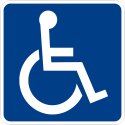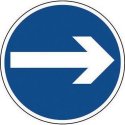Eighty-plus years ago, Great Britain entered what became the Second World War. London sustained attacks, along with other parts of the country. Much of the war effort was managed in an underground bunker in London, the Churchill Cabinet War Rooms.
What are the Churchill War Rooms? The war rooms were the nerve centre of operations during World War Two from an underground bunker in London. Winston Churchill and his war cabinet met and planned the allied route to eventual victory. The rooms have been preserved for generations to discover what happened in secret.

War in Europe ran between 1939 and 1945, with Britain fighting for those years. Without the Cabinet War Rooms in London, Churchill and his cabinet wouldn’t have remained safe enough to plan the conflict.
Top Attractions at the Cabinet War Rooms
- Churchill’s bedroom
- Cabinet War Room
- The Map Room
- Transatlantic Telephone Room
- Churchill Museum
- Films and audio
- Audio Guides
All About The Churchill Cabinet War Rooms
Is It Just a Musty Underground Museum?
Dug under the streets of Westminster and inhabited by those planning the war, they may have been musty then. Judge for yourself today whether musty is the right word when you visit.
Beneath the streets of London during the last great war, a series of hidden rooms were the nerve centre of planning for several years.
The British government used the Cabinet War Rooms to plot the final route to victory, from the heart of the country’s capital city. The secret labyrinth of rooms was designed to be bomb-proof from missiles and bombs dropped on the capital by the Luftwaffe. This w just as well, with the House of Commons at Westminster taking a direct hit.
Winston Churchill, who masterminded the war effort, did much of it from the rooms beneath London. Churchill’s bedroom is included in the tour and has been left very much as the leader would have left it.
This is true of the rooms on view. The Cabinet War Rooms look as if they have been frozen in time and that staff could walk back in tomorrow and continue their work.
Life underground would have been tough and crowded for all those involved. The map room looks today as if everyone just left on the final day of the war, leaving everything in place.
One part of the tour as you walk around is a small room known as the Transatlantic Telephone Room. Disguised as a toilet to hid it even from those who worked underground, the room provided a direct telephone link from Churchill to the President of the United States. It should be remembered, that 80 years ago, the existence of a link to the United States was cutting edge technology.
There are several permanent displays on offer which show aspects of life underground for the staff.
An audio tour is available in several languages, including English, French, German, Italian, Portuguese, Hebrew, and Mandarin, which are included in the entry ticket. The children’s version of the audio tour is only available in English.
The Churchill Museum
Part of the War Rooms is the Churchill Museum, which is included in the entry cost. The museum covers the remarkable 90-year life of Britain’s war minister and his time as Prime Minister after the war. There are recordings of many of his speeches and you can see and read some of his letters to his wife, Clementine.
There are many of Churchill’s personal possessions, including examples of his paintings and of course, cigars.
At the end of the tour, there is a souvenir shop with clothing, accessories, gifts, and DVDs.
Only small bags can be carried, as there are no facilities for storing larger luggage.
 What is There for Children to Do?
What is There for Children to Do?
There is a children’s version of the audio tour and is designed for those aged eight upwards. The children’s version is available only in English. A visit to the war rooms is very educational and is a popular spot for school groups.
 Selfies and Pictures
Selfies and Pictures
Finding a spot for a quick selfie picture next, to waxworks figures from the wartime era.
The rooms can be quite crowded at times, so may need to jump in quickly.
 Food and Drink
Food and Drink
There is an underground cafe as part of the war rooms, about halfway around the tour. The cafe offers traditional British food and home-cooked pies, plus salads.
Here you can sit and relax for a few moments, before completing your exploration.
 Disabled Facilities
Disabled Facilities
The Churchill War Rooms are fully wheelchair accessible. Access is via the entrance in Birdcage Walk, by St. James’s Park. It is recommended to book in advance.
 How to get to the Churchill Cabinet War Rooms
How to get to the Churchill Cabinet War Rooms
The closest underground tube stations are at St. James’s Park or Westminister. Busses stop at Parliament Street, Parliament Square. From the River Thames, the river bus stops at Westminster Pier.
CLOSE TO THE WAR ROOMS
Houses of Parliament
Westminster Abbey
Horse Guards Parade
* Entry costs are an indication and may change.


